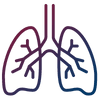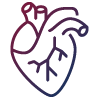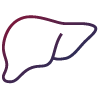Unfortunately, due to the health of our team, Mast Cell Hope has closed down in December of 2023. We will be maintaining this site for educational purposes for as long as we can. Visit our education page for learn about mast cell disease.

Learning Resources
OVERVIEW OF MAST CELL DISEASES
Mast cell disease is an umbrella term used to refer to the many different conditions that are characterized by the abnormal stimulation of mast cells. When stimulated, mast cells release mediators that cause a wide range of allergy-like symptoms. Mast cell disease occurs in both children and adults.What Is a Mast Cell?
Mast cells are immune cells that are found in loose connective tissue, called areolar tissue, all throughout the body, effectively in almost every organ. Mast cells play an important role in our health by activating an inflammatory response that helps protect us from pathogens and foreign substances. When stimulated by a trigger, mast cells cause allergy-like symptoms by releasing “mediators.”1 Mast cells are instrumental in maintaining the homeostasis of the immune system.2
However, in some people, mast cells do not function properly and are abnormally stimulated to release mediators, causing repeated and frequent episodes of allergy symptoms and anaphylactic symptoms. Abnormal mast cell activity also includes the unrestricted proliferation and accumulation of mast cells.3
What Are Mast Cell Mediators?
Located inside each mast cell are sacs, called granules, that contain many different types of mediators. Mediators are substances that interact with receptors (proteins located on the cell surface) throughout the body to cause symptoms of mast cell activation (allergy-like symptoms).2,4
Examples of mast cell mediators include: 4,5,6
- Histamine
- Tryptase
- Leukotrienes
- Prostaglandins
- Interleukins
- Heparin
- Tumor necrosis factor-α
- Cytokines
- Proteases
- Proteoglycans
Mast cell disease affects many organs, including:

Lungs
Heart
Bone marrow
Kidneys
Skin
Gastrointestinal tract (gut)
Brain
Spleen
Liver
Lymph nodes
Bladder*
*Interstitial cystitis is a common condition among mast cell disease patients
What Are the Different Types of Mast Cell Disease?
Cutaneous Mastocytosis
Cutaneous mastocytosis is defined as an abnormal accumulation of mast cells in the skin. Cutaneous mastocytosis occurs in both children and adults, but children are more likely to experience cutaneous mastocytosis than systemic mastocytosis.7 There are three subtypes of cutaneous mastocytosis.
Maculopapular Cutaneous Mastocytosis/Urticaria Pigmentosa (UP)
Maculopapular cutaneous mastocytosis, also referred to as urticaria pigmentosa, is characterized by hive-like dark, itchy, flat, and raised skin lesions that are tan or brown in color.
Urticaria pigmentosa occurs in both children and adults and is the most common type of cutaneous mastocytosis seen in children younger than two years old.7
In adults, urticaria pigmentosa generally shows as small monomorphic maculopapular lesions. In children, urticaria pigmentosa presents polymorphic maculopapular lesions of varying sizes and shapes.8
Solitary Cutaneous Mastocytoma
A solitary cutaneous mastocytoma is a nodule, papule, plaque, or module that is yellow-brown or reddish-brown in color and can measure up to 5cm in diameter. Cutaneous mastocytoma may develop in sites where trauma has occurred to the skin, such as if the skin is stroked or rubbed or at a vaccination site. The mastocytoma will react in a wheel and flare fashion (called Darier’s sign) when stroked.9
Mastocytomas are generally seen in children older than 15 years old. The majority of cases of solitary cutaneous mastocytoma, resolve spontaneously.7
Diffuse Cutaneous Mastocytosis
Diffuse cutaneous mastocytosis is a widespread rash of hive-like (urticaria) lesions that can affect the entirety of the skin. When urticaria are stroked, they present a Darier’s sign (wheel and flare reaction).9
Systemic Mastocytosis
Systemic mastocytosis is a group of mast cell disorders characterized by mast cell proliferation and accumulation in noncutaneous organs (organs other than the skin). There are six subtypes of systemic mastocytosis.
Indolent Systemic Mastocytosis (ISM)
Indolent systemic mastocytosis (ISM) is the most commonly occurring subtype of systemic mastocytosis. Patients with ISM may or may not have cutaneous symptoms, but the majority will experience skin lesions consistent with urticaria pigmentosa.10
Isolated Bone Marrow Mastocytosis (BMM)
Isolated bone marrow mastocytosis (BMM) is a subtype of systemic mastocytosis characterized by mast cell accumulation in the bone marrow. BMM most commonly affects men. Patients with BMM do not have cutaneous symptoms but do often develop osteoporosis.11
Smoldering Systemic Mastocytosis (SSM)
Smoldering systemic mastocytosis (SSM) is a progressive form of systemic mastocytosis that may progress to more severe forms of advanced systemic mastocytosis, such as:10,12
- Aggressive systemic mastocytosis (ASM)
- Systemic mastocytosis with an associated hematological neoplasm (SM-AHN)
- Mast cell leukemia (MCL)
Systemic Mastocytosis with an Associated Hematological Neoplasm (SM - AHN)
Systemic mastocytosis with an associated hematological neoplasm (SM - AHN) occurs when a patient’s symptoms fit the criteria for systemic mastocytosis and they also present with a non-mast-cell derived hematological or myeloproliferative neoplasm (MPN), such as:13,14,15
- Polycythemia vera
- Essential thrombocytosis
- Myelodysplastic/myeloproliferative neoplasms (MDS)
- Myeloproliferative neoplasms (MPN)
- Myelofibrosis
- Chronic myelomonocytic leukemia (CML)
- Acute myeloid leukemia (AML)
- Chronic eosinophilic leukemia (CEL)
- Lymphoma
Aggressive Systemic Mastocytosis (ASM)
Aggressive systemic mastocytosis (ASM) is a condition defined by the clonal proliferation of abnormal mast cells. Patients with ASM may develop an associated hematologic neoplasm in one of the following organs: 16
- Bone marrow
- Liver
- Spleen
- Gastrointestinal tract (gut)
- Skeletal system
Mast Cell Sarcoma (MCS)
Patients with mast cell sarcoma do not have symptoms of SM. Instead, MCS is an extremely rare, aggressive, and isolated neoplasm (tumor) that develops in the connective tissue.17,18
Mast Cell Leukemia (MCL)
Mast cell leukemia (MCL) is a rare, aggressive type of cancer that represents less than 2% of patients with mastocytosis.19
Mast Cell Activation Syndromes (MCAS)
Mast cell activation syndrome (MCAS) is a benign (non-malignant) condition that occurs in the majority (roughly 90%) of patients with mast cell disease. Patients with MCAS do not have symptoms that meet the criteria for systemic mastocytosis, but they do suffer from frequent, severe, and systemic anaphylactic-like episodes.
Mast Cell Hope tip: We are seeing an increased number of long-haul Covid patients who develop MCAS.
Monoclonal Mast Cell Activation Syndrome (MMAS)
Monoclonal mast cell activation syndrome (MMAS), also referred to as clonal or primary mast cell activation syndrome, is a condition in which abnormal clonal mast cells are detected. Patients with MMAS may present with cutaneous mastocytosis, systemic mastocytosis, or neither.20
Secondary Mast Cell Activation Syndrome (MCAS)
Secondary mast cell activation syndrome is a condition characterized by mast cell overstimulation to an IgE-dependent allergen or substance. Patients with MCAS present with an underlying allergic condition, inflammatory condition, or hypersensitivity disorder that causes mast cell activation.20,21
Idiopathic Mast Cell Activation Syndrome (IMCAS)
Idiopathic mast cell activation syndrome (IMCAS) occurs when patients experience repeated anaphylactic-like episodes with no known cause of mast cell activation. Patients with IMCAS do not present with an underlying allergic condition, inflammatory condition, or hypersensitivity disorder.20,21
Mast Cell Hope tip: Patients with IMCAS will present with mast cell activation in two or more organ systems and will have a positive response to H1 and H2 blockers.
Before diagnosing IMCAS, physicians should rule out other autoimmune diseases, such as:22
- Pheochromocytoma (a hormone-secreting tumor that generally develops in the adrenal glands)23,24
- Neuroendocrine tumors and carcinoid syndrome (tumors that release the same mediators as mast cells and can mimic mast cell activation syndrome)25,26,27,28
Hereditary Alpha-Tryptasemia (HαT)
Hereditary alpha-tryptasemia (HαT) is a genetic trait found in 4% to 6% of the general population.29 HαT is defined as having too many copies of the TPSAB1 gene. This genetic trait is referred to as autosomal, meaning that the gene is found on a chromosome that is not a sex chromosome. HαT is also considered dominant, meaning that someone only needs to inherit one copy of this gene for the person to be affected.
The HαT genetic trait causes elevated tryptase serum levels, which can cause symptoms of mast cell activation. However, not everyone with this genetic trait will experience symptoms (an estimated one-third of people with HαT experience symptoms of mast cell activation).29 All individuals who have elevated tryptase serum levels should be tested for HαT.
References:
- Kawa A. The role of mast cells in allergic inflammation. Respir Med. 2012;106(1):9-14. https://pubmed.ncbi.nlm.nih.gov/22112783/#:~:text=In%20conclusion%2C%20mast%20cells%20may,lymphocytes%20and%20inducing%20Th2%20lymphocyte.
- Krystel-Whittemore M, Dileepan KN, and Wood JG. Mast Cell: A Multi-Functional Master Cell. Front Immunol. 2016;6:620. https://pubmed.ncbi.nlm.nih.gov/26779180/.
- Theoharides TC, Tsilioni I, and Ren H. Recent advances in our understanding of mast cell activation – or should it be mast cell mediator disorders? Expert Rev Clin Immunol. 2019 Jun; 15(6): 639–656. [https://www.ncbi.nlm.nih.gov/pmc/articles/PMC7003574/(https://www.ncbi.nlm.nih.gov/pmc/articles/PMC7003574/)].
- Moon TC, Befus AD, and Kulka M. Mast Cell Mediators: Their Differential Release and the Secretory Pathways Involved. Front Immunol. 2014;5:569. [https://www.ncbi.nlm.nih.gov/pmc/articles/PMC4231949/(https://www.ncbi.nlm.nih.gov/pmc/articles/PMC4231949/)].
- Carter MC, Metcalfe DD, Komarow HD. Mastocytosis. Immunol Allergy Clin North Am. 2014;34(1):181-196. https://www.ncbi.nlm.nih.gov/pmc/articles/PMC3863935/.
- Theoharides TC, Valent P, Akin C. Mast Cells, Mastocytosis, and Related Disorders. N Engl J Med. 2015;373(2):163-72. https://www.nejm.org/doi/full/10.1056/NEJMra1409760.
- Sandru F, Petca RC, Costescu M, Dumitrașcu MC, Popa A, Petca A, and Miulescu RG. Cutaneous Mastocytosis in Childhood—Update from the Literature. J Clin Med. 2021; 10(7):1474. https://www.mdpi.com/2077-0383/10/7/1474/htm.
- Hartmann K, Escribano L, Grattan C. Cutaneous manifestations in patients with mastocytosis: Consensus report of the European Competence Network on Mastocytosis; the American Academy of Allergy, Asthma & Immunology; and the European Academy of Allergology and Clinical Immunology. J Allergy Clin Immunol. 2016;137(1):35-45. https://pubmed.ncbi.nlm.nih.gov/26476479/.
- Leung AKC, Lam JM, and Leong KF. Childhood Solitary Cutaneous Mastocytoma: Clinical Manifestations, Diagnosis, Evaluation, and Management. Curr Pediatr Rev. 2019;15(1):42–46. https://www.ncbi.nlm.nih.gov/pmc/articles/PMC6696819/#:~:text=Results%3A%20Typically%2C%20a%20solitary%20cutaneous,a%20leathery%20or%20rubbery%20consistency.
- Pardanani A. Systemic mastocytosis in adults: 2019 update on diagnosis, risk stratification and management. Am J Hematol. 2019;94(3):363-377. https://onlinelibrary.wiley.com/doi/10.1002/ajh.25371.
- Zanotti R, Tanasi I, Bernardelli A, Orsolini G, and Bonadonna P. Bone Marrow Mastocytosis: A Diagnostic Challenge. J Clin Med. 2021;10(7):1420. https://www.ncbi.nlm.nih.gov/pmc/articles/PMC8037514/.
- Valent P, Akin C, Karin H, et. al. Updated Diagnostic Criteria and Classification of Mast Cell Disorders: A Consensus Proposal. Hemasphere. 2021;5(11):e646. https://journals.lww.com/hemasphere/fulltext/2021/11000/updateddiagnosticcriteriaandclassification_of.3.aspx#T1.
- Njue L, Porret N, Fux M, Bacher U, Banz Y, and Rovo A. Systemic mastocytosis with an associated hematological neoplasms: One or two entities? eJHaem. 2020;1(1):353-355. https://onlinelibrary.wiley.com/doi/full/10.1002/jha2.22.
- Valent P, Akin C, Escribano L, Födinger M, Hartmann K, Brockow K, Castells M, Sperr WR, Kluin-Nelemans HC, Hamdy NA, Lortholary O, Robyn J, van Doormaal J, Sotlar K, Hauswirth AW, Arock M, Hermine O, Hellmann A, Triggiani M, Niedoszytko M, Schwartz LB, Orfao A, Horny HP, Metcalfe DD. Standards and standardization in mastocytosis: consensus statements on diagnostics, treatment recommendations and response criteria. Eur J Clin Invest. 2007;37(6):435-53. https://onlinelibrary.wiley.com/doi/10.1111/j.1365-2362.2007.01807.x.
- Gotlib J, Pardanani A, Akin C, Reiter A, George T, Hermine O, Kluin-Nelemans H, Hartmann K, Sperr WR, Brockow K, Schwartz LB, Orfao A, Deangelo DJ, Arock M, Sotlar K, Horny HP, Metcalfe DD, Escribano L, Verstovsek S, Tefferi A, Valent P. International Working Group-Myeloproliferative Neoplasms Research and Treatment (IWG-MRT) & European Competence Network on Mastocytosis (ECNM) consensus response criteria in advanced systemic mastocytosis. Blood. 2013;121(13):2393-401. https://www.ncbi.nlm.nih.gov/pmc/articles/PMC3612852/.
- Valent P, Akin C, Sperr WR, Escribano L, Arock M, Horny HP, Bennett JM, and Metcalfe DD. Aggressive systemic mastocytosis and related mast cell disorders: current treatment options and proposed response criteria. Leuk Res. 2003;27(7):635-41. https://pubmed.ncbi.nlm.nih.gov/12681363/#:~:text=Aggressive%20systemic%20mastocytosis%20(ASM)%20is,spleen%2C%20and%20the%20gastrointestinal%20tract.
- Ryan RJH, Akin C, Castells M, Wills M, Selig MK, Nielsen GP, Ferry JA, and Hornick JL. Mast cell sarcoma: a rare and potentially under-recognized diagnostic entity with specific therapeutic implications. Mod Pathol. 2013;26(4):533-43. https://www.nature.com/articles/modpathol2012199#:~:text=Mast%20cell%20sarcoma%20is%20a,entity%20are%20not%20well%20known.
- Potter JW, Jones KB, and Barrott JJ. Sarcoma–The standard-bearer in cancer discovery. Crit Rev Oncol Hematol. 2018;126:1–5. https://www.ncbi.nlm.nih.gov/pmc/articles/PMC5961738/.
- Joris M, Georgin-Lavialle S, Chandesris MO, Lhermitte L, Claisse JF, Canioni D, Hanssens K, Damaj G, Hermine O, and Hamidou M. Mast Cell Leukaemia: c-KIT Mutations Are Not Always Positive. Case Rep Hematol. 2012; 2012: 517546. https://www.hindawi.com/journals/crihem/2012/517546/.
- Valent P, Akin C, Nedoszytko B, Bonadonna P, Hartmann K, Niedoszytko M, Brockow K, Siebenhaar F, Triggiani M, Arock M, Romantowski J, Górska A, Schwartz LB, Metcalfe DD. Diagnosis, Classification and Management of Mast Cell Activation Syndromes (MCAS) in the Era of Personalized Medicine. Int J Mol Sci. 2020;21(23):9030. https://www.ncbi.nlm.nih.gov/pmc/articles/PMC7731385/.
- Valent P and Akin C. Doctor, I Think I Am Suffering from MCAS: Differential Diagnosis and Separating Facts from Fiction. J Allergy Clin Immunol Pract. 2019;7(4):1109-1114. https://www.jaci-inpractice.org/article/S2213-2198(18)30819-5/fulltext.